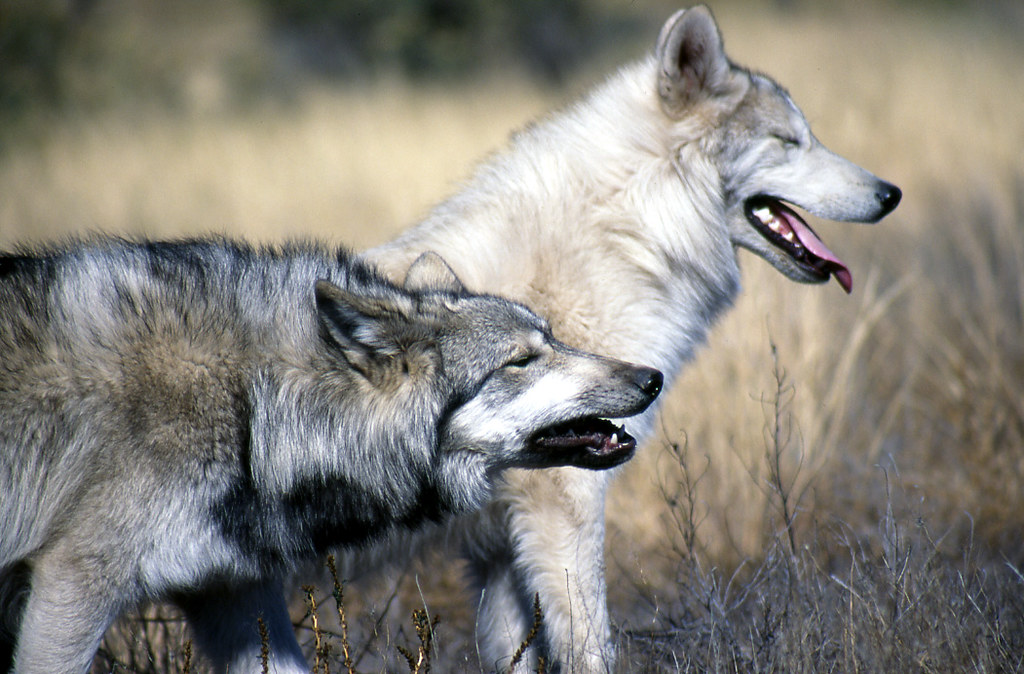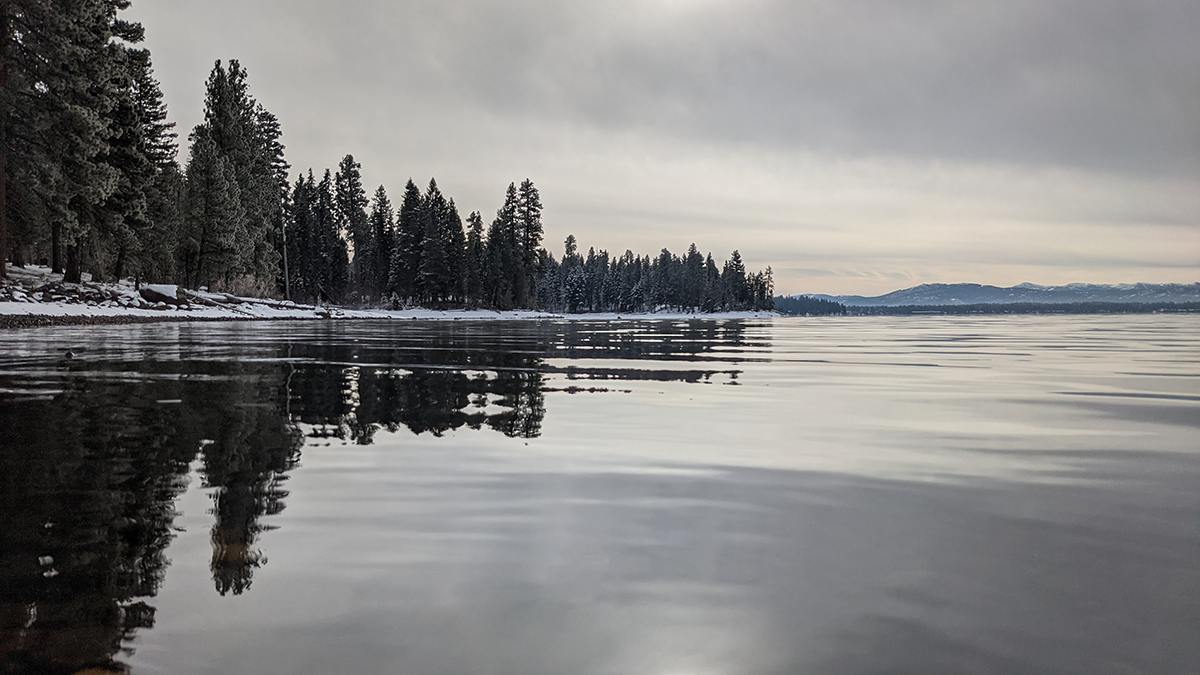
On election day, voters in two Western states took contrasting stances on wildlife. In Utah, voters approved Amendment E, which enshrines the right to hunt and fish in the state constitution. Colorado voters, meanwhile, narrowly passed one of the country’s more controversial ballot initiatives. Proposition 114 directs the state Parks and Wildlife department to introduce wolves to the western part of the state by 2023, making it the first voter-driven wildlife augmentation in U.S. history.
It would seem these two measures are at odds. Wolves like to eat the same deer, elk, and moose we harvest; therefore, hunting organizations have traditionally been against any measures aimed at boosting wolf numbers. But cast aside the rancor that accompanies wolf management, and it’s possible to see how these two measures might actually complement each other.
For one, the right to hunt is only possible if there are animals to hunt, and emerging research indicates that wolves could make for healthier game populations by mitigating chronic wasting disease, a malady killing deer and elk in the Mountain West. More significant, though, is that Utah and Colorado voters both acknowledged that wildlife management is an inherently political act. In the United States, animal populations depend largely on whether humans want them around or not. In Utah and Colorado, the voting public is getting a say in those decisions.
Colorado offers a case study of why people — more than climate, habitat, or any other “natural” factor — play the biggest role in the health of certain species. Consider the state’s wolves and elk. Beginning in the late 1800s, market hunters and European settlers started killing off big ungulates (especially bison) in astonishing numbers. Elk were nearly wiped out; by the early 1900s, only about 1,000 were left in Colorado. That led wolves to start hunting the cattle that replaced bison and elk, so ranchers and the state began an extermination campaign.
Over the next 120 years, predator and prey populations followed inverse trajectories. The rebound of elk has been astonishing; today, Colorado is home to about 280,000 elk, more than any other state. Meanwhile, Colorado wolves were killed off by the mid-1940s.
The fate of elk and wolves wasn’t shaped by environmental factors. After killing nearly all of them, Coloradans decided they liked elk, which are now flourishing. They also decided they did not like wolves, and did kill all of them.
But in November, a razor-thin margin of Colorado residents decided to reverse that trend by passing Prop. 114.
“Now we get on with the hard work of putting a wolf population back in place here,” Rob Edward, whose Rocky Mountain Wolf Action Fund led the Prop. 114 campaign, told Stateline. “Regardless of the margin on this vote, it signals a sea change in Western wildlife management. This is historic, and one day will be looked on as a profound conservation victory.”
Wolves are always tailed by controversy, and Prop. 114 was no different. Opposition groups called the initiative a “forced introduction” fueled primarily by out-of-state money. The Rocky Mountain Elk Foundation, among the most pragmatic conservation groups out there, released an ominous video laying out the case against the proposition, and the group’s CEO said in a statement that the measure was an “environmental extremist-driven ballot initiative.”
RMEF, which helps fund a wolf bounty in Idaho, and other opponents of Colorado’s measure settled on a consistent epithet: Proposition 114 epitomized “ballot box biology.” Wildlife decisions should be made by experts, they argued, not the whims of the voting public.
“Ballot box biology is reckless,” RMEF President Kyle Weaver said in a statement. “In this particular case, it totally undermines the authority of Colorado’s wildlife professionals who have said time and time again over several decades that a forced wolf introduction is a bad idea.”
It’s a tantalizing argument, but it doesn’t hold water. Indeed, the Colorado Parks and Wildlife Commission has declined to relocate wolves to the state three times since 1982, but the commission isn’t made up of wildlife professionals — it’s a citizen oversight board whose members are appointed by the governor; the current chair is a retired utility executive. Further, any “forced reintroduction” comes on the heels of forced extirpation by government trappers. The support of wildlife professionals is selective, too — hunting groups didn’t show much love for the U.S. Fish and Wildlife Service or the Department of the Interior when they decided to augment wolf and grizzly populations.
Another argument against Prop. 114 was that wolves could decimate the state’s wildlife populations. This is unlikely. Since wolves were released in Yellowstone in 1995, elk populations and harvests have increased in Wyoming and Montana, and they’ve remained flat in Idaho.
Emerging research also suggests that wolves could maintain healthier big-game populations. Chronic wasting disease, a degenerative neurological condition that affects deer, moose, and elk, is spreading among Western big-game populations, especially in Wyoming and Colorado. Left unchecked, the disease could put entire herds at risk, particularly in areas like the National Elk Refuge where animals congregate en masse.
An ongoing research project, though, suggests wolves could curb the spread of the disease. Preliminary results from a study led by Penn State doctoral student Ellen Brandell suggests that wolves can mitigate CWD outbreaks by consuming the gaunt, listless animals infected with the disease. “Wolves have really been touted as the best type of animal to remove infected deer, because they are cursorial — they chase their prey and they look for the weak ones,” Brandell told The New York Times.
Brandell’s research could bolster the case for more wolf introduction efforts like Colorado’s — even in places like Utah, where CWD could pose a real threat to that state’s brand-new constitutional amendment.
Amendment E stipulates that hunting be the “preferred” form of wildlife management, but that method has its shortcomings. Hunters target trophy bucks with ideal genetics, but wolves cull the sickly animals that can transmit CWD and other diseases. Predators could be the best tools for that job, too. CWD can linger in vegetation and soil for 10 years, so it’s important that infected carcasses be entirely consumed.
“Taking the sick and weak removes chronic wasting disease from the population, because any animal showing any signs of it will get killed and eaten by the wolves,” Princeton ecologist Andrew Dobson told the Times. “The rest of the carcass gets cleaned up by the coyotes, the bald eagles, ravens, and bears.”
Despite the potential CWD benefits, one shouldn’t expect Utah to introduce wolves any time soon. As U.S. Geological Survey wildlife ecologist David Mech wrote in a 2017 paper, “if wolves are to survive [outside of national parks], that will require considerable attitude adjustment by humans toward them.”
If Colorado’s vote is any indication, that adjustment could be taking place. And elk, deer, and the hunters who chase them could be better off for it.
I rely on readers like you to spread the word about Bitterroot. Please share it with a friend.
Worth a Read
Top stories from around the West
The Las Vegas Review-Journal’s Eli Segall lays out how the pandemic has exposed the vulnerabilities of Nevada’s tourism-dependent economy. Experts say diversification will require investments not in business incentives and tax breaks, but in public education, transit, health care, and other public services.
•••
Lynda Mapes of The Seattle Times has the story of the Nez Perce Tribe’s decades-long campaign to remove dams along the Snake River. Like many Northwest tribes, the Nez Perce saw a society-sustaining resource — salmon — all but disappear when dams were built in the Columbia basin.
•••
There was no “blue wave” in 2020, but Democrats did quite well at the top of the ticket in Colorado, New Mexico, and Arizona. The reason? As Here and Now reports, a mix of Latino and Native American outreach coupled with folks moving inland from coastal metros is shifting politics in the Southwest.
•••
If New Mexico Representative Deb Haaland is named Interior Secretary, one of her trademarks would be a bipartisan fashion of politicking that Native Americans have long had to rely on, Julian Brave NoiseCat writes in Politico Magazine.
•••
Josie Sexton of The Denver Post has an interesting piece about a COVID business trend: retail and restaurants are out, but wellness is very, very in.
•••
The Confederated Salish and Kootenai Tribes and the Department of Justice announced a plan to coordinate missing persons investigations and communications. As The Billings Gazette’s Juliana Sukut writes, it’s an important development as jurisdictional confusion often stalls these cases in Indian Country.
•••
2021 could be the year of affordable housing in Salt Lake City. According to The Salt Lake Tribune, the City Council and mayor’s office are pushing for a slate of affordability measures, including the requirement of inexpensive units in new developments.
•••
The Seattle Times’ Scott Greenstone examines a turbulent year for Hopelink, a charity helping needy families in Washington’s wealthiest cities. That so many of Jeff Bezos’ and Bill Gates’ neighbors are struggling highlights the country’s income inequality and the disproportionate impacts of the COVID-19 pandemic.
Appreciate our work?
Your Land
An ode to the public lands we share

Share with a friend | Watch a cat video | View previous newsletters
